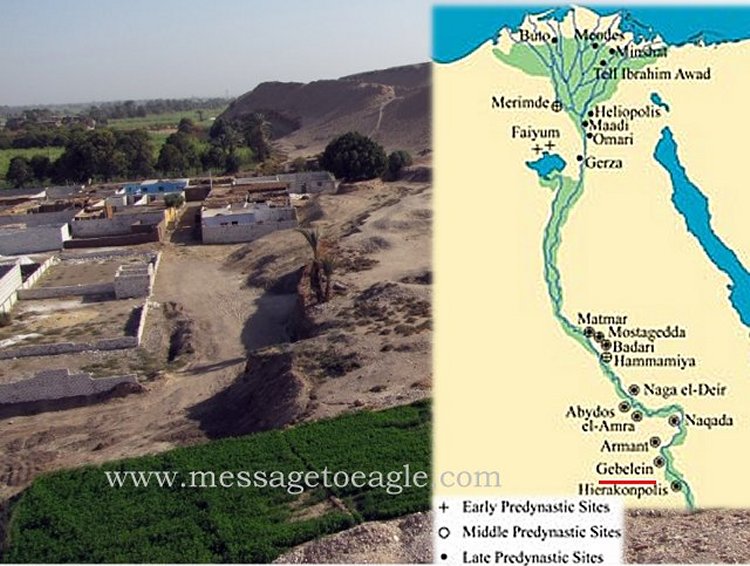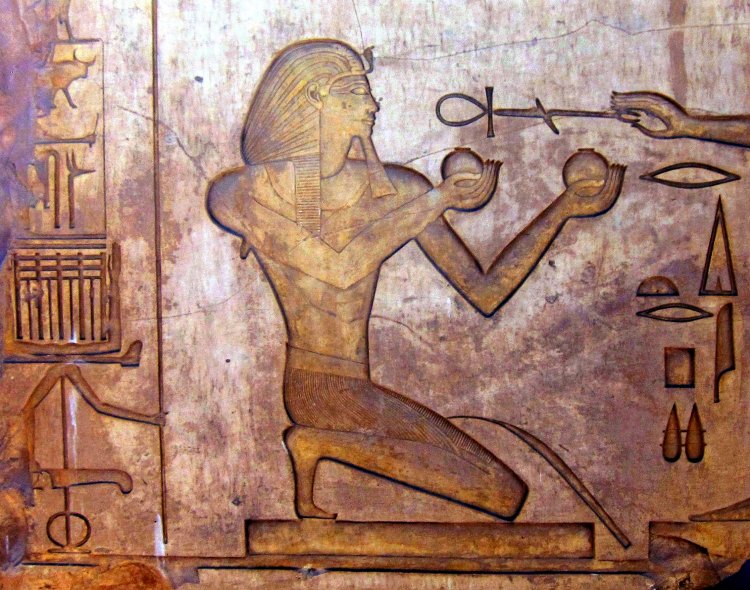MessageToEagle.com – A team of archaeologists from the Polish Centre of Mediterranean Archaeology of the University of Warsaw began research in the ancient temple at Gebelein in Upper Egypt.
Gebelein was already known to the local authorities, but so far no archaeologist has studied it.
Currently, Gebelein is a complex of archaeological sites located approx. 30 km south-west of Luxor. More than 5 thousand years ago there was probably a capital of one of the proto-states, which laid the groundwork for the civilization of the Pharaohs.

“This temple was dedicated to Hathor, with the cult epithet ‘Lady of Gebelein’ and to probably to Amun-Ra.
Unfortunately, his depictions are not preserved and further studies are needed to verify this idea” – explained Daniel Takács, a member of the expedition.
Pharaoh Akhenaten, who ruled in the fourteenth century BC, promoted the worship of one god, whose symbol was the solar disk. Depictions of other gods who did not have solar aspects were destroyed during his rule.
The Goddess Hathor was associated with the sun, so her depictions ware spared.

“The most puzzling was the lack of royal names in the temple. Rulers of ancient Egypt loved to put their names on the walls of temples exposed to the public view.
“Sometimes they would destroy the names of previous kings to put their own in these places.”
See also:
Polish Excavations In Gebelein ‘Domain of Hathor’ in Upper Egypt
Detailed studies of reliefs and inscriptions yielded sensational results, dating the construction of the temple and the first phase of decoration to the reign of the queen Hatshepsut (fifteenth century BC), whose name the ancients wanted to erase from history.
After the death of her husband, Tuthmosis II, Hatshepsut exercised power of a regent on behalf of her minor stepson and nephew – Tuthmosis III.
At some point Hatshepsut also began to apply the full royal titulary, reserved only for pharaohs, despite the fact that Egypt had a rightful ruler – Tuthmosis III.
For decades, researchers thought that the queen wanted to take over full power, and her ambitious building program and depictions of the queen as a legitimate ruler on the walls of temples were intended to legitimize her reign at the expense of her stepson.
Or perhaps the situation was much more complicated?
“Perhaps, many years after her death, due to a complicated dynastic situation, Tuthmosis III was afraid that another ambitious queen might take over and push his own son away from power?
This could lead to his decision to remove references to Hatshepsut as a pharaoh, according to the principle – if it is not engraved in hieroglyphics, it never happened. But this is one of many theories,” Ejsmond, director of the expedition said.
“Why he wanted to erase her name is still a mystery.”
Hatshepsut was neither the first nor the last woman pharaoh in Egyptian history. However, the ancients did not try to erase others female pharaohs from history. That is why scientists are so puzzled by consistent attempts to remove the name of Hatshepsut.
Further work in the rock temple at Gebelein may also provide more information on her reign. Archaeologists plan to remove the debris from the floor.
Perhaps they can find artefacts from the period of the functioning of the temple.
Researchers use various photographic techniques that allow not only to take pictures of antiquities, but after processing in specialized software also to enhance the features that are no longer visible or very hard to see for the naked eye.
MessageToEagle.com
Expand for referencesReferences:






